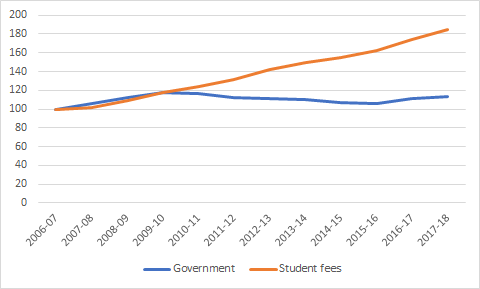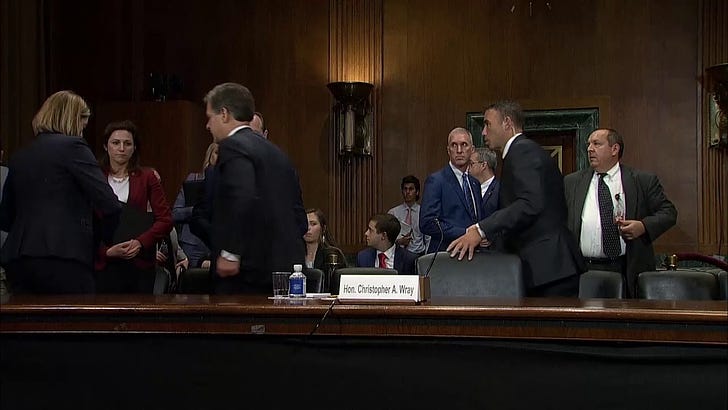U. of Arizona’s Micro-campus Model
When I got Brent White on the phone late last month, he was in the Chinese city of Qingdao, getting ready for the graduation of the University of Arizona’s first class of micro-campus students. Which was convenient timing, since that’s why I had reached out to White, who is Arizona’s vice provost for global affairs and dean of global campuses.
At a moment when the number of foreign students coming to the U.S. seems to be slowing and interest in international branch campuses waning, I wanted to learn more about this alternative model of internationalization. Despite the name, micro-campuses might be a bold idea.
What is a micro-campus? It’s Arizona’s effort to deliver its degree programs around the world, at partner institutions. Unlike traditional 2+2 or 3+1 dual-degree programs, the students never come to Tucson. Instead, they earn their full degree – and typically, a diploma from the partner university as well – in their home country, on the micro-campus site.
“Instead of having the students move, the institution moves,” White says.
White argues that coming to study in the United States, whether for a full degree or as part of a joint program, is simply out-of-reach for most students worldwide. It’s expensive, and for many students, work and family obligations make going overseas, even short term, an impossibility.
Attending a micro-campus does cost more than a home-country degree. Students pay tuition at or near the rates for Arizona state residents (the university and its partner share the revenues). That, however, is far less than if they studied in Tucson, plus they are able to maintain their local connections and obligations. This fall, about 1,200 students are expected to be enrolled.
“We’re providing access,” White says, “to students who otherwise wouldn’t have an international education.”
The degrees offered at each site reflect local needs – in Qingdao, students receive a bachelor’s in law while other micro-campuses offer degrees in fields like engineering, business administration, and public health. The courses are developed by Arizona faculty but may be taught by visiting university professors or local hires. Faculty from 10 different departments have been involved in setting up 15 degree programs.
Arizona also is aiming for geographic diversity. While some of the micro-campuses are in “usual suspect” places like China and the Persian Gulf, others – there are five current campuses, with five more opening in the next year – are in southeast Asia, Africa, and South America. One will be in Iraq.
Still, I had to ask White: Was this just a dual-degree program, minus the mobility? And even if Arizona wasn’t taking on the risk or liabilities of a full-fledged foreign branch campus, there had to be real costs – in faculty and administrators’ time, for one – to doing this and doing it well. What were the benefits to having a micro-campus?
Beyond providing access to underserved students, the microcampuses will double as research and study-abroad sites for Arizona students and academics, a pathway for outbound mobility. But White said the ultimate goal is to build a global network that links institutions around the world to do joint research or other collaborative work. In fact, after the graduation ceremony, White welcomed some 100 participants to Qingdao to the first-ever micro-campus conference, a chance for current and prospective partners to explore ways to work with and learn from one another.
Are micro-campuses the model for future international engagement? Perhaps not, but they are a model, and an interesting one.
I’ll continue to use this space for occasional looks at how individual institutions are tackling common problems. Is your college taking an innovative approach to global recruitment, international-student success, study abroad, or some other facet of international education? Tell me about it at latitudesnews@gmail.com, and I could feature you in a future newsletter.
FBI Director: Colleges “Pipelines” for Intellectual Property
FBI Director Christopher Wray called China the greatest counterintelligence threat to the United States – and suggested again that American universities may be a particular point of vulnerability. Testifying in the U.S. Senate, Wray said the Chinese government has used students and researchers and “created pipelines” at universities to steal intellectual property.
Wray wasn’t alone in his criticism of higher ed, as several senators also said universities aren’t doing enough to protect sensitive research. “If we're relying on a university to do it,” said Sen. John Kennedy, a Louisiana Republican, “my guess is a lot of them don't know how, and frankly, some of them probably don't care, as long as they're getting the tuition.”
A Supreme Court Decision and OPT
Could a fairly obscure Supreme Court decision threaten the future of optional practical training, the work program for recent international graduates? That’s the buzz I’m hearing – well, as buzzy as an obscure Court decision can be.
In brief, the ruling, in a case called Kisor v. Wilkie, limits the amount of deference courts should give to federal-government agency interpretations of their own statutes. Previously, the principle had been to put a “thumb on the scales” in favor of the agency’s interpretation. But in their decision, the justices ruled that courts should work hard to decipher the rules for themselves. When they do defer, it should be because the agency interpretation is truly reasonable – that is, it is based on real expertise and careful judgement, not a “convenient litigating position.”
So, why could the decision affect OPT? The training program was created, and later expanded, through agency regulation rather than legislation. Opponents of OPT argue it is the product of administrative overreach and may be ready to use Kisor to challenge previous legal rulings upholding it. The lawyer representing a group of tech workers suing to end OPT told Bloomberg Law:
“Sadly, this system has completely broken down because the agencies test the bounds of what their authority is and the courts have let the agencies run amok.”
We’ll see what happens. For more background on Kisor and OPT, check out that Bloomberg piece, as well as one from National Law Review.
Know a fellow international-education geek? Forward them a copy of latitude(s).
Around the Globe
FIRE, the free-speech group, is accusing the American University of Cairo of failing to uphold academic freedom in the case of a professor who says he was stripped of his endowed position under pressure from a donor.
The University of California regents have approved an audit to identify risks related to “foreign influence” on the system’s 10 campuses.
An anonymous donor gave the University of Chicago $35 million to support financial aid for undergraduate international students.
Diversity Abroad is running a survey on diversity and inclusion in international ed.
Turkey's highest court has ruled that the sentencing of academics for signing a letter that called for an end to the government's conflict with the country's Kurdish minority violated their rights, good news for a California professor who has been charged for signing the same letter.
For extra-credit reading, check out this piece on how Turkey purged its intellectuals.
The collapse of a public-private project at the University of Ghana backed by the U.S. government is a setback for American efforts to counter China’s influence in Africa.
“It increasingly looks like the post-2008 recession changed something permanently and significantly in university finances,” writes Alex Usher in this terrific thread on Canadian higher education. That something? International students.


Could the targeting of Chinese scientists in the U.S. fuel brain drain back to China?
And finally…
Last week I wrote about a Chinese TV show that has as its central plot the adventures of students (and their parents) who come to study in America. If you’ve got a hankering to watch it, @AnthonyTeacher helpfully tweeted links to episodes on YouTube:
It doesn’t have anything to do with either China or students, but I love this piece about the enduring popularity of Friends among Latino baseball players learning to speak English. My favorite nugget: Wilmer Flores of the New York Mets is such a Friends fanatic that he uses (or at least did when this article was written) the theme song as his walk-up music. Goes to show that when you’re in a strange, new country, popular culture will be there for you.
’Til next week – Karin
For the best international education news and analysis, please subscribe to latitude(s). In this startup phase, I’ll be making the newsletter free; in the future, I’ll ask for a small fee to support quality journalism.


